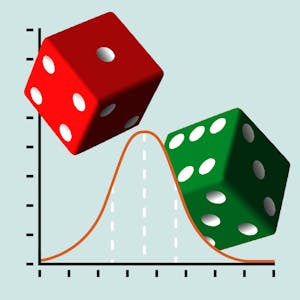An Intuitive Introduction to Probability
About this Course
This course will provide you with a basic, intuitive and practical introduction into Probability Theory. You will be able to learn how to apply Probability Theory in different scenarios and you will earn a \"toolbox\" of methods to deal with uncertainty in your daily life. The course is split in 5 modules. In each module you will first have an easy introduction into the topic, which will serve as a basis to further develop your knowledge about the topic and acquire the \"tools\" to deal with uncertainty. Additionally, you will have the opportunity to complete 5 exercise sessions to reflect about the content learned in each module and start applying your earned knowledge right away. The topics covered are: \"Probability\", \"Conditional Probability\", \"Applications\", \"Random Variables\", and \"Normal Distribution\". You will see how the modules are taught in a lively way, focusing on having an entertaining and useful learning experience! We are looking forward to see you online!Created by: University of Zurich

Related Online Courses
This course covers communication skills that engineering leaders use every day to motivate, inspire, and support the people in their organizations. Speaking and writing are basic leadership... more
This is a self-paced lab that takes place in the Google Cloud console. Use the gcloud CLI to add VMs to your network, then test the latency between the VMsCreated by: Google Cloud more
This comprehensive course equips learners with a deep understanding of modern security principles and practices within IT infrastructure management. Participants explore critical modules covering... more
This specialization provides a comprehensive understanding of business analytics and essential management skills. Learners will master Excel for data analysis, financial statement analysis, and... more
We will learn computational methods -- algorithms and data structures -- for analyzing DNA sequencing data. We will learn a little about DNA, genomics, and how DNA sequencing is used. We will use... more








